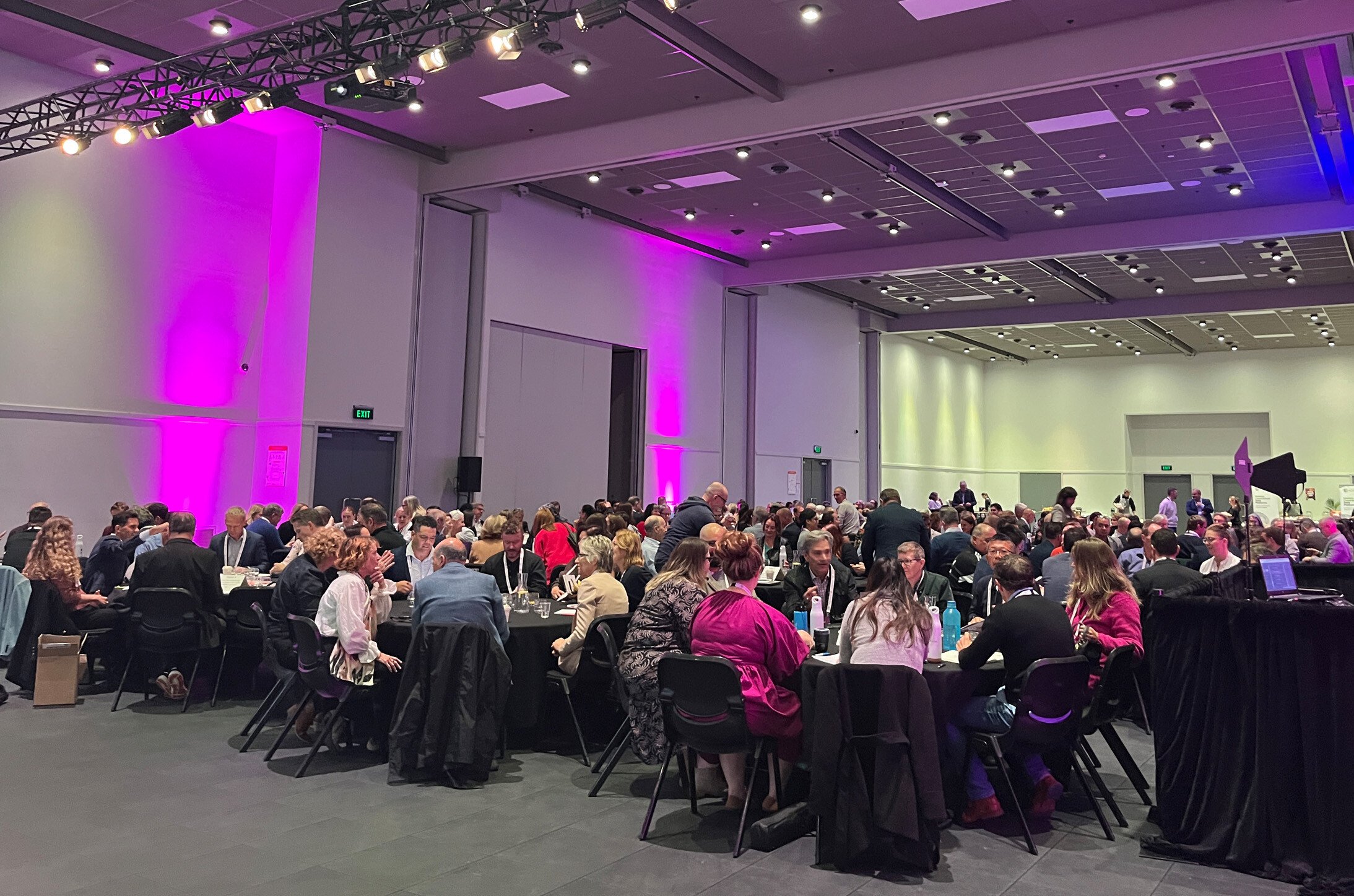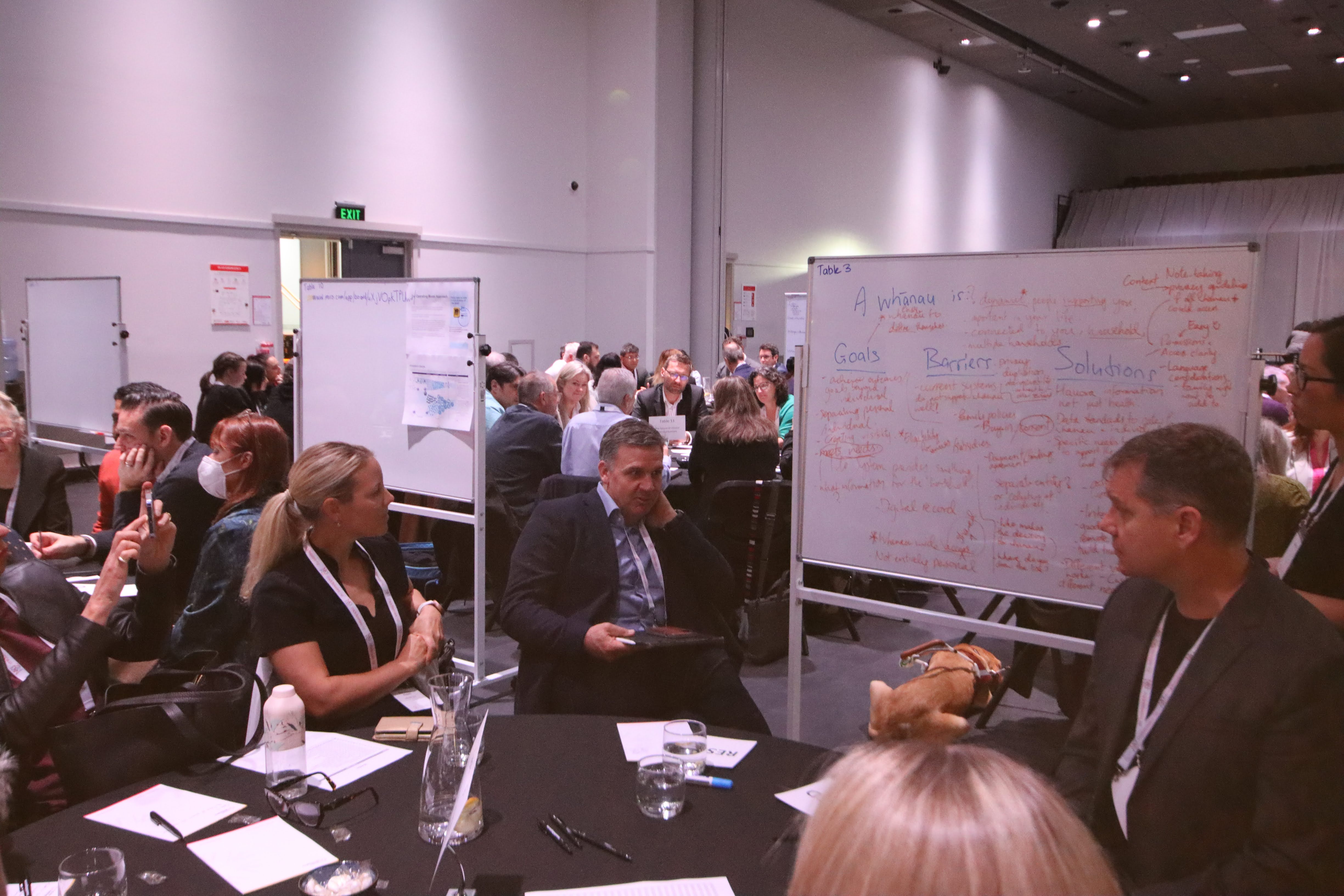The poor state of the IT systems in the New Zealand health system is not a new subject. To quote the former Chief Data and Digital Officer of Health New Zealand, Leigh Donoghue, it is an ‘Ugly Baby.’
Less front of mind is the state of systems in community care. While the Venn diagram of systems used will intersect with some of the 6,000 systems referred to in the above description of the New Zealand health system, community care is broader than this. Many of the services are not funded by contracts from Health New Zealand | Te Whatu Ora, but by a plethora of other government agencies, such as the Ministry for Social Development, Oranga Tamariki, and the Department of Corrections.
The result is that community health and social care providers often have many teams, delivering on a wide range of services, for a large number of commissioning agencies.
Often, the needs of different services are met with a range of different systems, which can include:
-
- Systems imposed on them by commissioning agencies, such as FSNet for the Family Start programme
- Systems designed for other use cases, such as using medical PMS for social service delivery
- And of course paper and Excel
As a sign of my naïveté, it came as something of a shock to me, to discover that government agencies are often no better. Excel is still King!
The result of this is that a provider's operations and data are often broken up into silos.
Breaking providers into silos leads to:
-
- Inefficiencies
- Poor coordination between teams
- Compromised security (emailing Excel spreadsheets full of sensitive PII comes to mind)
- Poor data quality
- A lack of information about the impact of services
- Negatively impacted outcomes for whānau
As I have spoken of previously, part of the problem is the funding model, which funds individual services, rather than providers as a whole. There is also a lack of explicit funding for systems, with funding often only covering the costs of staffing, leaving little for providers to invest in the sophisticated systems they require.
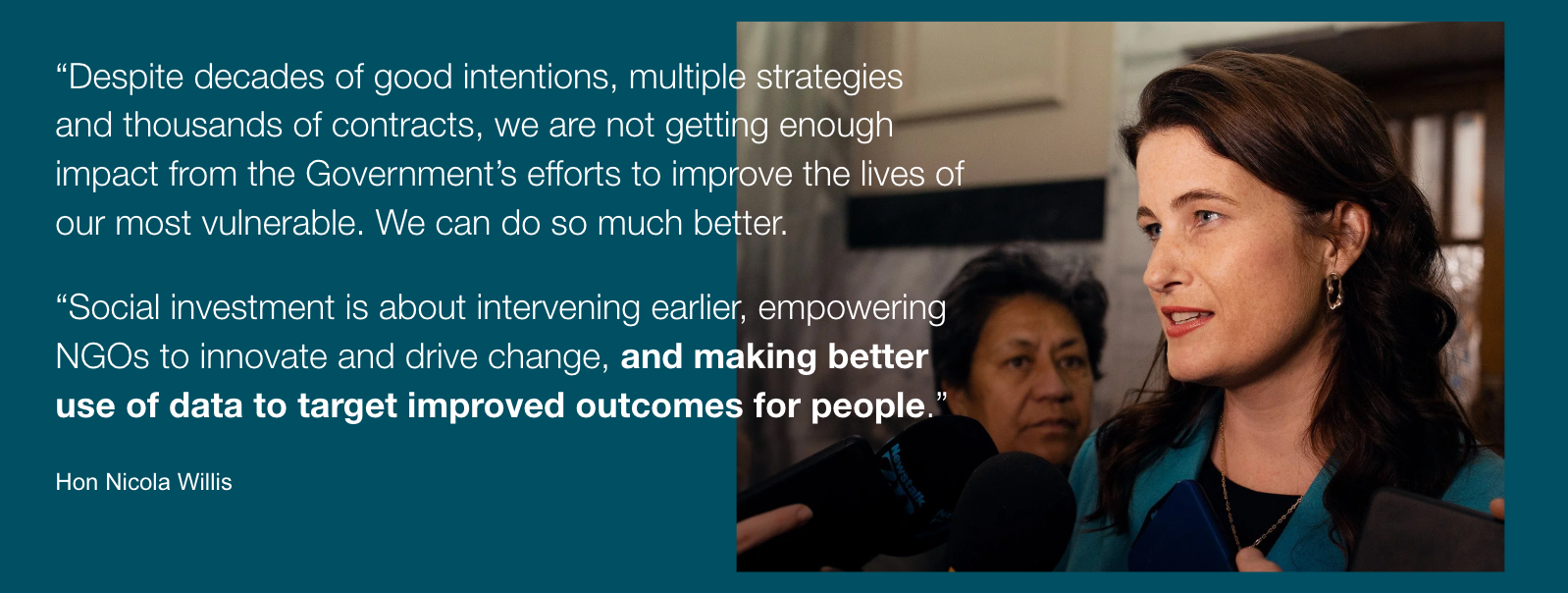
Which doesn’t mean that government doesn’t want the data! The current coalition government has repeatedly referred to a need to fund organisations according to their impact.
On the face of it, this makes a lot of sense, but it only makes sense if all providers and government agencies have the ability to capture and analyse the required information.
I’m proposing that we need end-to-end data capture and analytics that allows providers to work from a unified system while programmatically delivering required data to commissioning agencies, without creating silos.
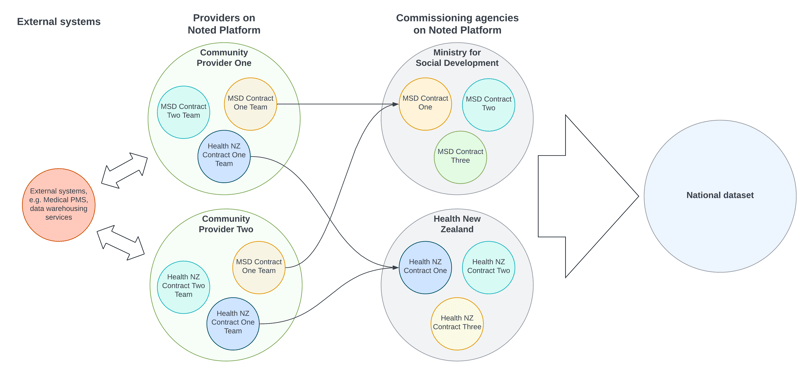
In the diagram above, each provider has many teams working from one system, with full access to their information, and data relating to specific contracts is programmatically delivered from many providers to the single commissioning team managing that contract.
In this scenario, the data from all the contracts could also be appropriately aggregated within the commissioning agency, and even nationally.
Since 2017, Noted has been working with community-based health and social service providers, working steadily towards delivering on the solution described.
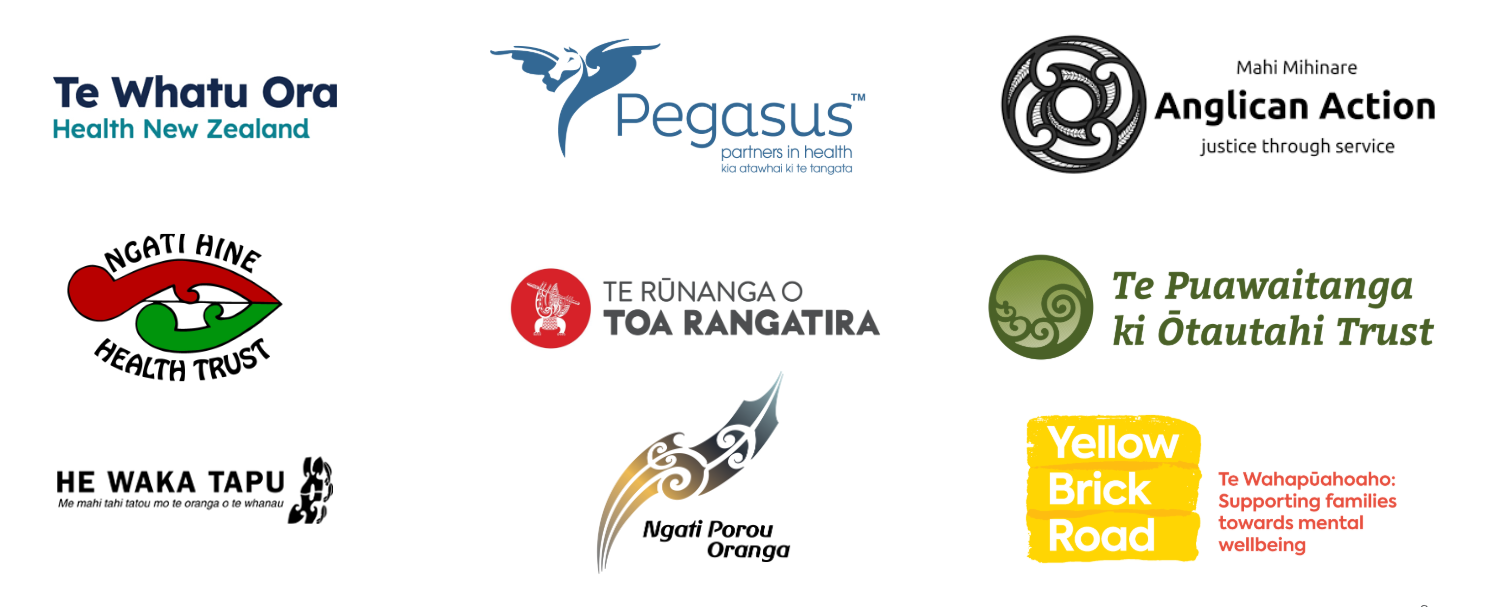
Our current customer base of over 152 customers includes community teams at Health New Zealand, Pegasus Health, over 20 Māori health providers, mental health and social services providers, over 26% of NZ secondary schools, and various small private practices.
Kaimahi working for Noted’s customers find it easier to document their mahi while easily capturing and accessing the information teams they collaborate with, managers, and administrators need to manage their operations and meet the requirements of their funders.
Recipients of care benefit from less double handling, better access to care, and ultimately better outcomes.
Implementing the platform for commissioning agencies would enable funders to automatically receive much better quality data, more often, and more securely than is currently possible, without imposing silos on service providers.
Constantly iterating over and extending the platform, we have identified a number of key components that we believe are absolute requirements for a solution of this nature to work. They include:
-
- Standardised data concepts, including for wellbeing measurement
- Easy data capture by frontline staff
- Whānau as a first-class entity
- Organising users into Teams
- Highly flexible access controls
- Appropriate security and privacy
- Interoperability with other systems
- Seamless synchronisation with sophisticated Data Discovery tools, available to both providers and commissioning agencies.
Standardised data concepts
Data domains
To create a platform that would work across the ecosystem we needed to create a library of data domains that would enable us to create a standardised BI interface that works for all customers and provide for the aggregation of data from all providers.
Dr Pernille Christensen, our data architect, led the project. Collaborating with our own staff and customers, Pernille created a taxonomy of 300 data domains designed for community care in Aotearoa. This included grappling with the concepts of whānau and whakapapa.
Importantly, the concepts can be labelled as the customer wishes. In some organisations, a ‘client’ could be ‘tangata whaiora’, in another it could be ‘patient’, meaning that each provider can use its own language.

Some of Noted's data domains, showing the nesting of related concepts
Wellbeing aspects
Typically, wellbeing is measured using outcome tracking frameworks, of which there are many to choose from. These frameworks certainly have their place, but they also have their limitations.
An outcome tracking framework will track certain data points that are seen as being analogous of wellbeing. The constraint of this approach is that frameworks tend to be fairly blunt instruments. They tend to only track a few key data points, which makes it hard to understand the surrounding context, and look for unexpected patterns in the data.
It is also hard to compare outcomes from different frameworks, and imposing single frameworks on hundreds of providers is not without its challenges.
As an alternative, we propose that the wellbeing of a person or whānau be broken down into many Wellbeing Aspects, chosen from a standardised library, similar in structure to those of the data domains referred to above.
The idea is to create a holistic view, whereby different aspects are tracked by relevant staff. Recipients of care can choose aspects they want to focus on and associated actions and activities can also be tracked.
The approach allows wellbeing to be measured, tracked and analysed from the level of an individual person or whānau, right up to an entire population. Changes in wellbeing can also be triangulated with activity and money spent.

Wellbeing aspects are organised into dimensions to make them easy to find.
Easy data capture by frontline staff
Our work with data concepts is only useful if the right data is captured. We have worked hard to ensure that staff can easily enter the required information as they do their work, with data points embedded in context specific, dynamic, structured forms they use to manage their work flow and take case notes.

Forms are tailored to each team, supporting staff to easily capture required data.
Whānau as a first-class entity
Studies in Aotearoa and internationally have demonstrated significant benefits from taking a family-centric approach to the delivery of care. From the practical perspective, of coordinating the care of whānau, through to tracking aspirations and outcomes, it is critical to treat whānau as a first class entity, in its own right.
To this end, Noted includes a whānau feature, whereby a whānau (whanaugna āwhina) is effectively a ‘client made up of clients’.
Organising users into teams
In practical terms, a team is typically staff of the same profession delivering on a particular contract. Teams are important because each may well have different workflows, and information access rules.
We have found supporting the concept of teams at a fundamental level in Noted to be crucial, allowing us to offer users a great user experience, while giving administrators very fine control over users’ access to information in a scalable way.
Highly flexible access controls
To enable all staff in a provider to safely and securely enter information into a unified system, access controls are a must. Under the Privacy Act 1993, information should only be stored and accessed if required for care, and in complex organisations with diverse teams, it is often not appropriate for all staff to access all information. In extreme cases, some contracts explicitly require that no one outside of the team knows that a client is in the care of that service.
While easy to say, this is a big ask. Access controls have many edges to cover off and if they are not easy to use there is a high risk that information will be leaked by accident.
Noted has taken a flexible, nonheirachical approach to access controls that provides administrators easy to use, fine-grained controls.
There 3 layers of access to case notes:
-
- Find and view (full access)
- Find (a user can see a record exists, and who wrote it, but not read it)
- No access (users without access do not know that a client is in the care of a team at all)
Defaults are set up for each team so that it is possible for combinations of other teams and staff to have the various levels of access automatically applied as records are created.
Controls are also provided over access to clients, groups, whānau, and a plethora of other entities in the system.

An example of access control setup for a team
Appropriate security and privacy
It is critical that people’s sensitive information is kept safe. Information captured should only be used for its intended purpose, and consent obtained. Data needs to be kept safe, including using encryption and appropriate authentication mechanisms.
Sensitive information should absolutely not be emailed, or otherwise transferred or stored insecurely!
Noted follows best practice, with strict internal processes for handling sensitive information, no data sharing, secure storage, embracing AWS’ Shared Responsibility Model, powerful user authentication that supports MFA and SSO, encryption in transit and at rest, 24/7 monitoring by automated systems, regular penetration testing, and a secure API.
Interoperability with other systems
Staff rely on information and functionality from across the ecosystem, and an important method of breaking down silos is to increase connectivity between systems that staff rely on.
Providing a truly unified platform for both health and social requires quite a number of integrations that also need to be seamlessly included in the user experience of users, ingesting and sharing data externally as appropriate.
Noted has already integrated with PRIMHD (Health NZ mental health contract), ACC billing, various school management systems, Twilio (in-app video calling), and ERMS (end-to-end referral system with wide coverage in the South Island). NHI lookup is underway. Noted also offers the ability to share data with external systems via its FHIR API.
We are looking forward to announcing further integrations later in 2025.
Seamless synchronisation with sophisticated Data Discovery tools
Capturing rich, fine-grained data is hard enough, but it is only of any value if it is possible to access it. I would argue that the answer to this is sophisticated, standardised data discovery tools that are seamlessly integrated with client management systems.
Providers require data discovery tools that enable them to:
-
- Manage data quality
- Obtain an overview of people and whānau
- Manage operations
- Build and run reports
- Obtain an overview of their performance
- Demonstrate impact
Commissioning agencies need to be able to:
-
- Securely receive and aggregate data from many providers
- Build and run reports
- Obtain an overview of the performance of providers
- Demonstrate impac
Commissioning agencies need to be able to:
-
- Securely receive and aggregate data from many providers
- Build and run reports
- Obtain an overview of the performance of providers
- Demonstrate impact
Noted’s approach to solving this has been to build our own data warehouse that synchronises data from the Noted app every 24 hours.
Information is surfaced to users with a wide range of highly sophisticated tools, including tools for:
-
- Managing data quality
- Client navigation
- Report building
- Operational reporting
- Whanaunga Āwhina (Whānau) reporting
- Displaying the performance of the organisation
- Demonstrating the impact of individual staff, teams, providers, and entire contracts
Noted offers the ability to programmatically deliver data from specific contracts to a single datamart that can be accessed by the team managing the contract at the commissioning agency. This enables the team managing a contract at a government agency to automatically receive data from their providers and have the tools they need to access the data from all of their providers.

A snippet from Noted's high level 'snapshot' tool
AI
Many tools are now available, built on LLMs, that allow users to summarise client encounters into text. These are being quickly adopted by clinicians, eager to save time. AI offers much more than this, of course, with opportunities to summarise information, offer clinical decision support, and streamline administration, etc.
Noted has exciting plans in this area. Watch this space.
Conclusion
Currently, the overall state of systems for the delivery of community-based health and social care in Aotearoa is grim. With a long lack of investment in appropriate systems at all levels, many providers and government agencies still lean heavily on Excel and legacy systems.
The result is inefficiency, poor data quality, siloed information, compromised security, negatively impacted outcomes and a severe lack of information on the return on investment from the billions of dollars allocated by the government.
We conclude that the answer is a sector-wide platform that solves significant challenges faced by providers, removes silos, and automatically delivers required information to commissioning agencies.
Working with complex health and social service providers in the community, Noted has built a proven solution that already works. At a time when efficiency and impact measurement is critical, and an eventual solution needs to be deployed quickly, we believe Noted will be an important part of a future solution for Aotearoa.



